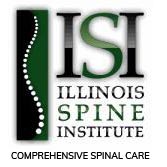Spinal stenosis refers to narrowing of the spinal canal caused by degeneration of the facet joints and thickening of the ligaments. These thickened ligaments narrow the spinal canal and compress the nerves causing chronic pain, numbness and tingling sensation or weakness in your arms or legs. Surgery is recommended when your pain is not relieved with conservative treatments such as physical therapy or medications.
Thoracic spine decompression is a general term that refers to various surgical procedures intended to relieve pressure off the spinal nerves or spinal cord. These surgical procedures aim to increase the space within the spinal canal or neural foramen where the spinal nerve roots leave the spinal canal. Thoracic spine decompression may include the following surgical procedures:
Laminectomy:
During a laminectomy the entire lamina (bone that forms a protective roof over back of the spinal cord), a part of the enlarged facet joints and the thickened ligaments are removed to relieve pressure.
Laminotomy:
During a laminotomy, just a section of the lamina and ligament is removed.
Foraminotomy:
In foraminotomy, the space where the spinal nerve roots leave your spinal canal (neural foramen) is increased by carefully removing soft tissues, any small disc fragments and any bony spurs within the region. Thus, pressure is taken off the nerve root.
Laminoplasty:
In Laminoplasty, the space in the canal is increased by repositioning the lamina rather than removing it completely in a laminectomy. During laminoplasty a hinge is created on one side of the vertebrae by folding the lamina back and a cut is made on the other side. Small metal plates are then used to help the lamina heal in its altered configuration allowing more space in the canal.
Discectomy:
During discectomy a part of the herniated disc compressing the nerve root is removed.
Corpectomy:
Sometimes, the body of a vertebra is removed along with the discs.
Bony spurs removal:
Removal of bone spurs may also be performed.
Spinal decompression may involve a combination of these surgical procedures. The surgery for spinal decompression makes the spine unstable. In some cases another procedure called spinal fusion may be required to stabilize the spine. Spinal fusion uses bone grafts, rods, plates or screws to join together two separate vertebrae in the spine to form one solid piece of bone.
Risks and complications
Risks and complications of spinal decompression include infection, bleeding, blood clots, nerve or tissue damage and allergic reaction to anesthesia.
